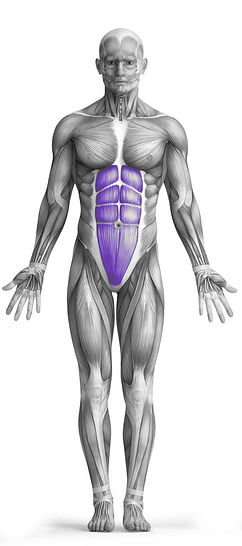Half Kneeling Adductor Pallof Press 101 Video Tutorial
0

Exercise Synopsis
Target Muscle Group
Abs
Secondary Targets
None
Execution
Compound
Force Type
Isometric
Required Equipment
Cable Machine
Fitness Level
Beginner
Variations
None
Alternatives
None
Timer
Hour
Minute
Second
Stopwatch
00:00:00:00
Overview
The Half Kneeling Adductor Pallof Press is an effective core-strengthening exercise that primarily targets the abs. This exercise is performed by kneeling on one knee while facing a cable machine with a handle attached to the high pulley. The individual grips the handle with both hands, engaging the core, and then presses it forward, extending the arms while resisting the rotational pull of the cable. The movement challenges the stability of the torso, engaging the abs to prevent any twisting or leaning. The cable machine provides consistent tension, making it an excellent exercise for building core strength and stability.
How to Perform
Begin by positioning yourself in a half kneeling stance, with one knee on the ground and the other leg extended straight, facing the cable machine. Ensure the cable handle is attached to the pulley at chest height.
Straighten the leg that is closest to the cable machine, allowing a gentle stretch through your inner thigh (adductor).
Grip the cable handle with both hands and pull it towards your chest, ensuring your weight is balanced evenly between both feet.
As you exhale, push the handle forward in a controlled motion, fully extending your arms while resisting the pull of the cable.
Return the handle back to the starting position slowly, maintaining control of your core throughout the movement.
Complete the desired number of reps, then switch sides and repeat the process.
★ Bonus: For exercises that involve external weights (such as dumbbells, barbells, or machines), the One Rep Max (1RM) calculator can help you estimate your maximum lifting capacity. Use it to track your strength progress and adjust your training for optimal results.
Tips
Avoid allowing your hips to twist or rotate while extending the handle. Keep your lower body stable throughout the movement.
Make sure to exhale as you push the handle forward. This breathing pattern will help activate your core muscles more effectively.
If maintaining a neutral spine becomes challenging during this exercise, start with a lying (supine) version to build foundational core control. Once you're able to maintain proper stability, gradually progress to the half kneeling and tall kneeling variations.
Refrain from holding your breath. It’s essential to stabilize your body without relying on breath-holding, as it could lead to compensations and loss of control. Focus on maintaining proper posture and alignment while breathing naturally.
How Not to Perform
Avoid Hip Rotation: Do not allow your hips to rotate or twist while performing the movement. Keep your pelvis square to the ground to ensure the focus stays on your abs and prevents unnecessary strain on your lower back.
Don’t Overextend the Arms: Resist the urge to push the handle too far beyond full arm extension. Overextending can cause unnecessary strain on the shoulders and reduce core engagement. Focus on a controlled, stable press that activates your abs effectively.
Don’t Hold Your Breath: Holding your breath during the press can lead to tension in your body, limiting core activation and increasing the risk of injury. Instead, exhale as you extend the handle and breathe naturally throughout the movement.
Avoid Leaning Forward: Don’t lean your upper body forward as you press the handle. This can shift the focus away from the abs and place undue pressure on your back. Keep your torso upright and stable, with your core engaged.
Don’t Collapse Your Chest: Ensure your chest remains open and proud as you press the handle. Avoid rounding or collapsing your chest, which can lead to poor posture and less abdominal engagement.
Don’t Rush the Movement: Avoid performing the exercise too quickly. A fast movement can reduce the effectiveness of the exercise and increase the risk of injury. Focus on slow, controlled motion, ensuring your abs are engaged throughout.
Don’t Use Momentum: Do not rely on momentum to push the handle forward. Focus on using your core muscles to drive the movement, avoiding any jerky or swinging motions that could waste energy and reduce effectiveness.
Avoid Overloading the Weight: Using too much weight can compromise form and lead to injury. Start with a manageable load that allows you to maintain proper posture and technique, then gradually increase the weight as your core strength improves.
Don’t Allow Your Spine to Flex or Extend Excessively: Avoid rounding or arching your back while pressing the handle. Keep your spine neutral and your core engaged to protect your lower back and maximize the focus on your abs.
Variations
Variations of fitness exercises refer to different ways of performing a specific exercise or movement to target various muscle groups, intensities, or goals. These variations aim to challenge the body differently, prevent plateaus, and cater to individuals with varying fitness levels.
Alternatives
Alternative exercises in fitness refer to different movements or activities that target similar muscle groups or serve the same training purpose as the primary exercise. These alternative exercises can be used as substitutes when the original exercise is unavailable or challenging to perform due to various reasons such as equipment limitations, injuries, or personal preferences.








